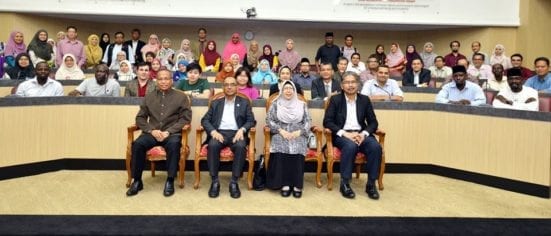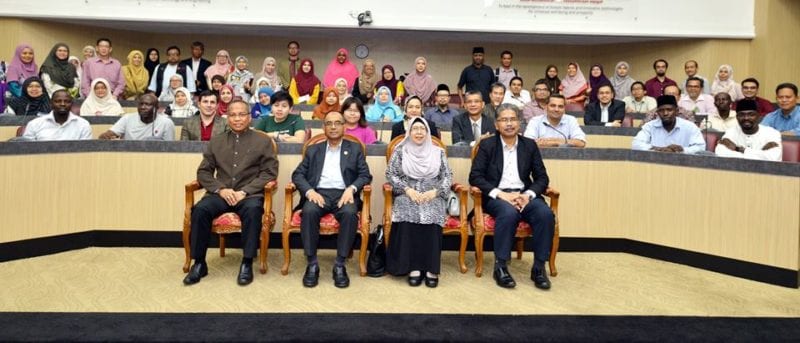JOHOR BAHRU, 18 July 2018 – Leadership is about inspiring and influencing people, and not about titles, position or followers.
There are three types of leaders which are Visionary, Strategic, and Transformational.
To enable the organization’s transformation to occur smoothly and neatly, the highest leadership within it should have the abilities to manage, to clarify issues arising, to communicate with subordinates and also to highlight positive images.
Universiti Teknologi Malaysia (UTM) Pro-Chancellor, Tan Sri Saadiah Sheikh Bakir said that in addition to having the above leadership features, organizational leaders must also train themselves to have a futuristic and insightful, transformative, risk-taking attitude and be willing to change the game ‘rhythm’ according to the situation.
“When it is said to be futuristic and visionary, they must be able to predict the future as if they have a magic crystal ball ahead of them as well as reforming the staff serving under them in line with the desired changes.
“In line with the ever-changing world, these leaders must always ensure that they are positive and have high level of commitment to move according to the pace of change even if they are at risk,” she said.
These organizational leaders must also be able to inspire subordinates and be able to influence others to accept their views and ideas in order to solve problems.
She said this when giving a speech entitled ‘Visionary, Strategic and Transformational Leadership’ at the Senate Hall, Sultan Ibrahim Chancellory Building, UTM Johor Bahru.
The talk was also attended by UTM Vice-Chancellor, Prof. Datuk Ir. Dr. Wahid Omar and also UTM Registrar, Dato Wan Zawawi Wan Abdul Rahman.
Tan Sri Siti Saadiah further mentioned the leadership qualities that must be avoided in order to prevent the fall of an organization.
“There are five characteristics of a leader that must be avoided to prevent destruction to any organization.
The characteristics are Maharajas, Dinosours, Superman, The Boss and Oscar Winners.
“A Maharaja is a leader who practices one-way communication and practices centralized control systems while a Dinosour showcases a leadership style that is burdensome to top management and is filled with complicated bureaucracy and hierarchical in nature,” she said.
On the other hand, Superman is characterized by a leader who takes the approach to solving organizational problems on his own and does not trust the subordinates to carry out the task.
“Leaders who practice this style also do not care about the roll-out of governance to enable the organization to continue to exist and be relevant to the community,” she said.
Tan Sri Saadiah also pointed out that leaders should not adopt The Boss attitude which stick to the theory of Labor-Relations.
She said that this style applies the master-servant relationship which might not be suitable to some organizations having employees of various age groups.
“In an open and transparent organizational setting of today, subordinates should also be involved together through discussions on future organizational direction.
Tan Sri Saadiah said it was not necessary for top management to be an Oscar winner-type of leader who is only surrounded by workers who are always ‘Yes Man’ to the boss.
Such an attitude, she said, would only contribute to the destruction of the organization in the long run as the top management might think that they have done the best, and everything is fine while what is happening is the opposite.


